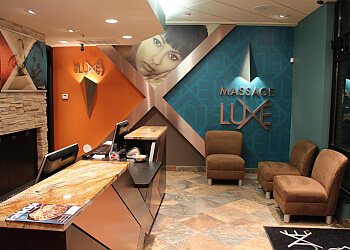A Guide to Massage Therapy


Although myofascial release has been around since the 1960s however it wasn't until recently that it was acknowledged as a legitimate treatment for chronic low back pain. Myofascial release was first recognized by the medical profession after people started complaining of back pain. Myofascial release, or mechanical traction as it is sometimes called is based on the theory of tension that is the root cause of the majority of discomfort in the body. Unnatural tension causes inflammation, pain, and stiffness in joints, tendons, and muscles. The goal of myofascial release therapy is to determine the source of tension and eliminate it so that the body can recover itself.
One way that mechanical tension is discovered is through tight muscles. For instance, you might have heard of athletes using heat and ice when they're injured in order to ease swelling and help in relieving pain. The therapist may use gentle pressure to loosen tight muscles, or to ease stiffness in the lower back. Another method is to apply gentle pressure on muscles that are stiff while other clients are massaged. Many people like to get an entire body massage as it relaxes them and gives them the feeling of peace and well being. A good massage can release endorphins which are natural painkillers.
Massage therapy is also used to treat inflammation, pain and stiffness in the body. Many have noticed that their lives are much happier after a good massage as they can reduce pain, get better circulation, and ease tension and stress that could have caused the discomfort. Myofascial release is a technique used by therapists in order to loosen the fibrous tissue around joints. This alleviates pain. This tissue is called the fascia and it is responsible for the connective tissue within the joint. In some instances when the fascia becomes inflamed, it may cause pain, however in cases where the condition isn't severe it can be treated with ice and/or heat.
Trigger points are muscles that are tight that run from the spine to adjacent muscle groups. Trigger points can be inflamed due to daily activities and/or a physical feature. If they become tight, trigger points may cause severe pain and dysfunction. Trigger points can be treated using myofascial releases because when muscles are relaxed, they are able to decrease the tightness and therefore the pain.
Another technique is the transversus abdominis syndrome or TUS. It involves gentle pressure on the abdominal wall. The key to TUS is not to apply direct pressure. Instead, the therapist searches for areas that are tense and then applies pressure for a long period of time. Myofascial release can also involve gentle and continuous pressure on the pelvis, abdomen, and lower back muscles. Myofascial Release can ease the pain and dysfunction that comes with tight muscles and tight muscles.
Overuse is among the leading causes of stiffness and pain. When a person is overworked and their body adjusts, slowing down while keeping the same pace throughout the range of motion. For instance, when a professional runner does a 30 minute mile run, their muscle and skeletal systems are exhausted and they eventually slow down throughout the run because of the excessive use.
Myofascial release is a gentle massage of knots or adhesions to the point of stiffness or pain. The massage won't work if the knots and adhesions are torn completely. When the adhesion is weak it will not be as efficient. The massage should not be performed on the lower back. Hands-on manipulation of the pelvis is more efficient than when it's performed on the abdomen. This is due to the fact that the abdominal muscles are not being over-worked.
After gaining experience in this type of technique, they can be very proficient in applying this technique and applying it in combination with other massage therapy techniques. 안산출장안마 Myofascial Release is a great alternative to manual pressure and other stretching techniques. It's a safe and efficient method to keep people in good shape, and to prevent injury. Myofascial Release is an excellent method for a therapist to incorporate massage therapy into a patient's everyday routine. Myofascial releases are becoming more popular and more therapists will be able to apply it safely and effectively.
